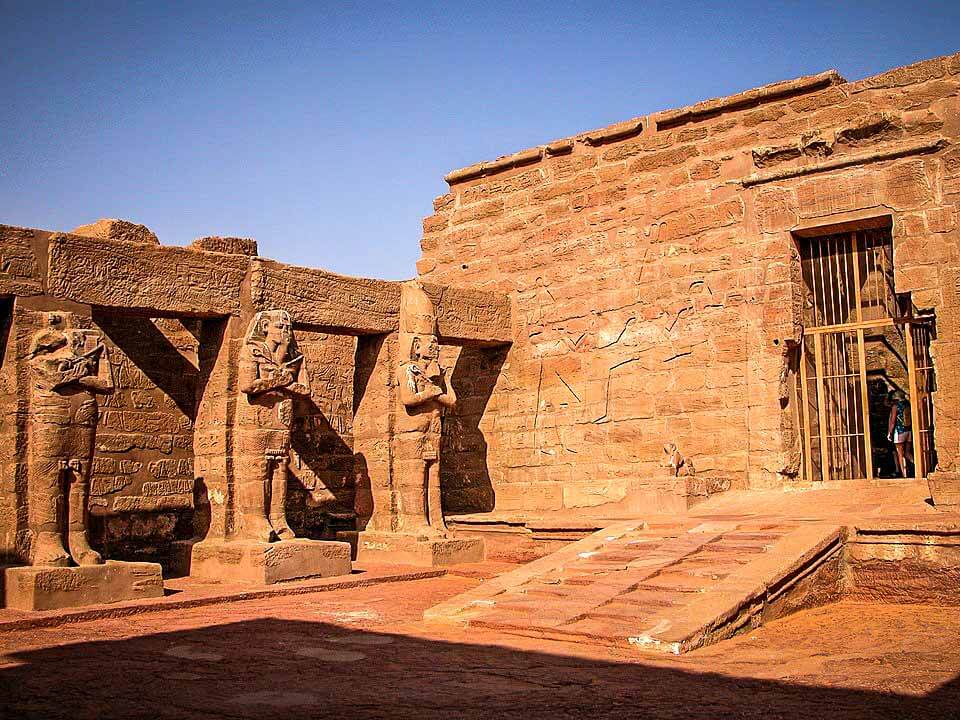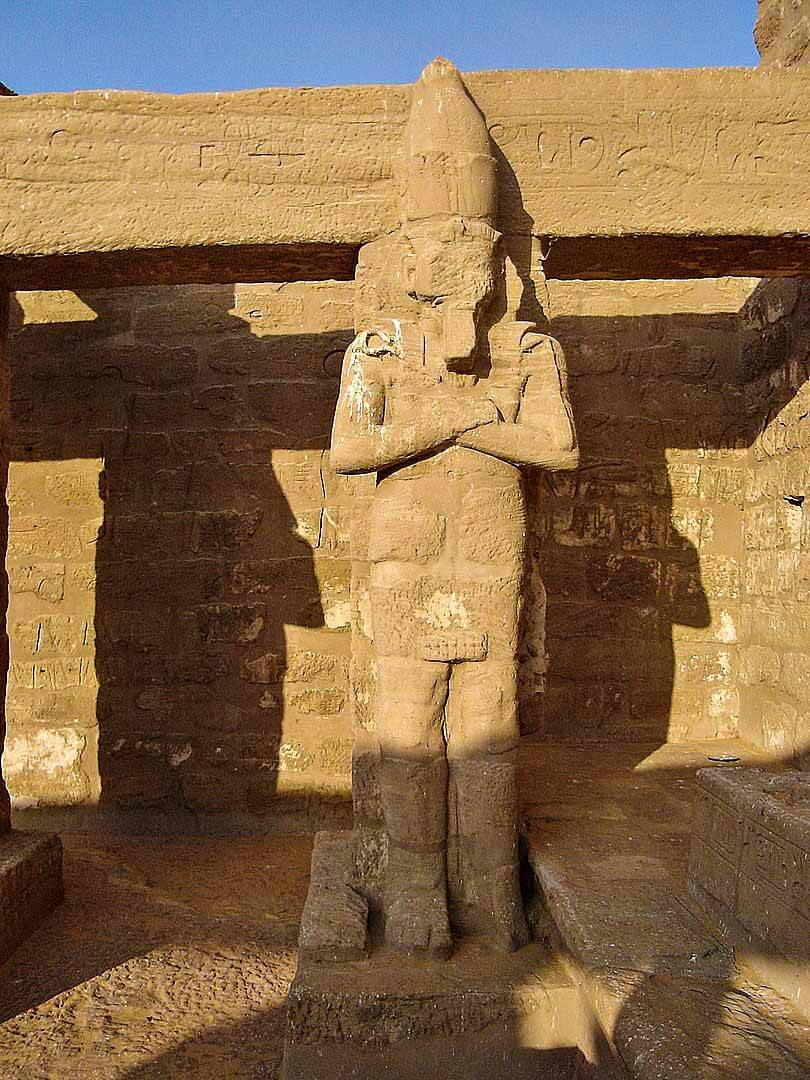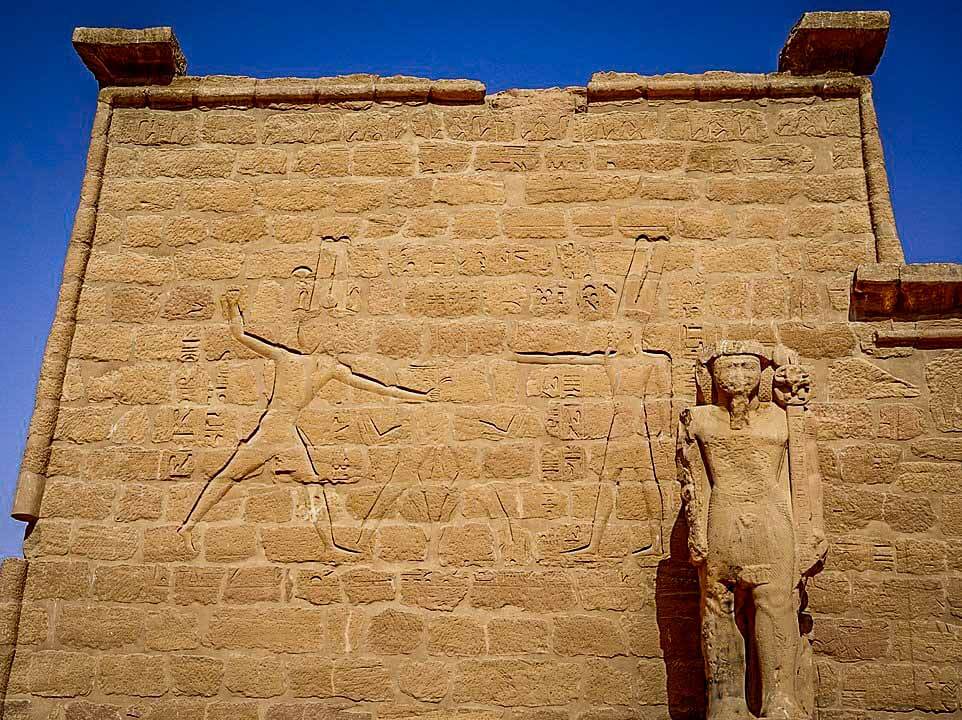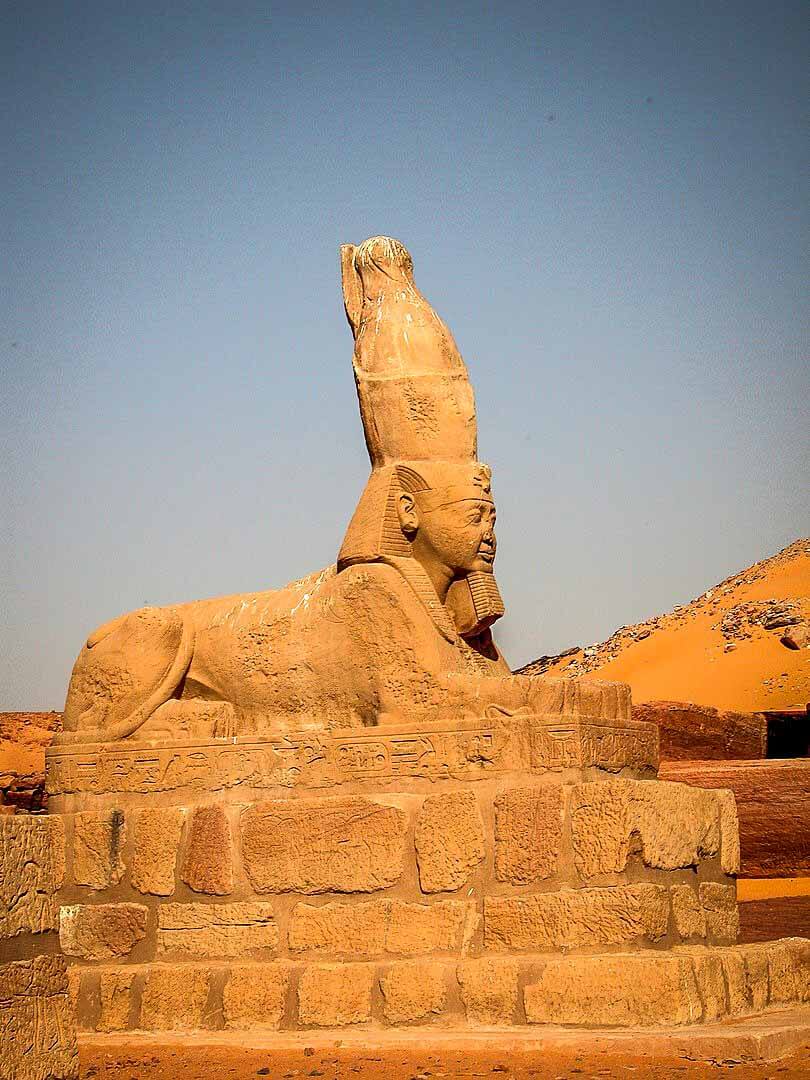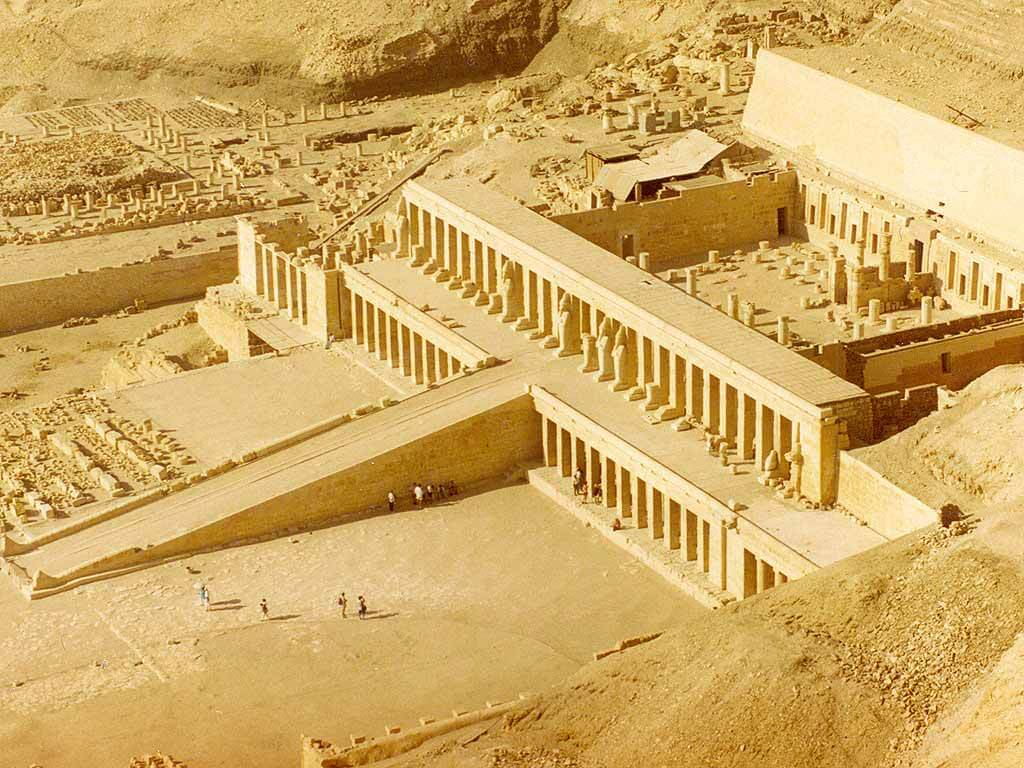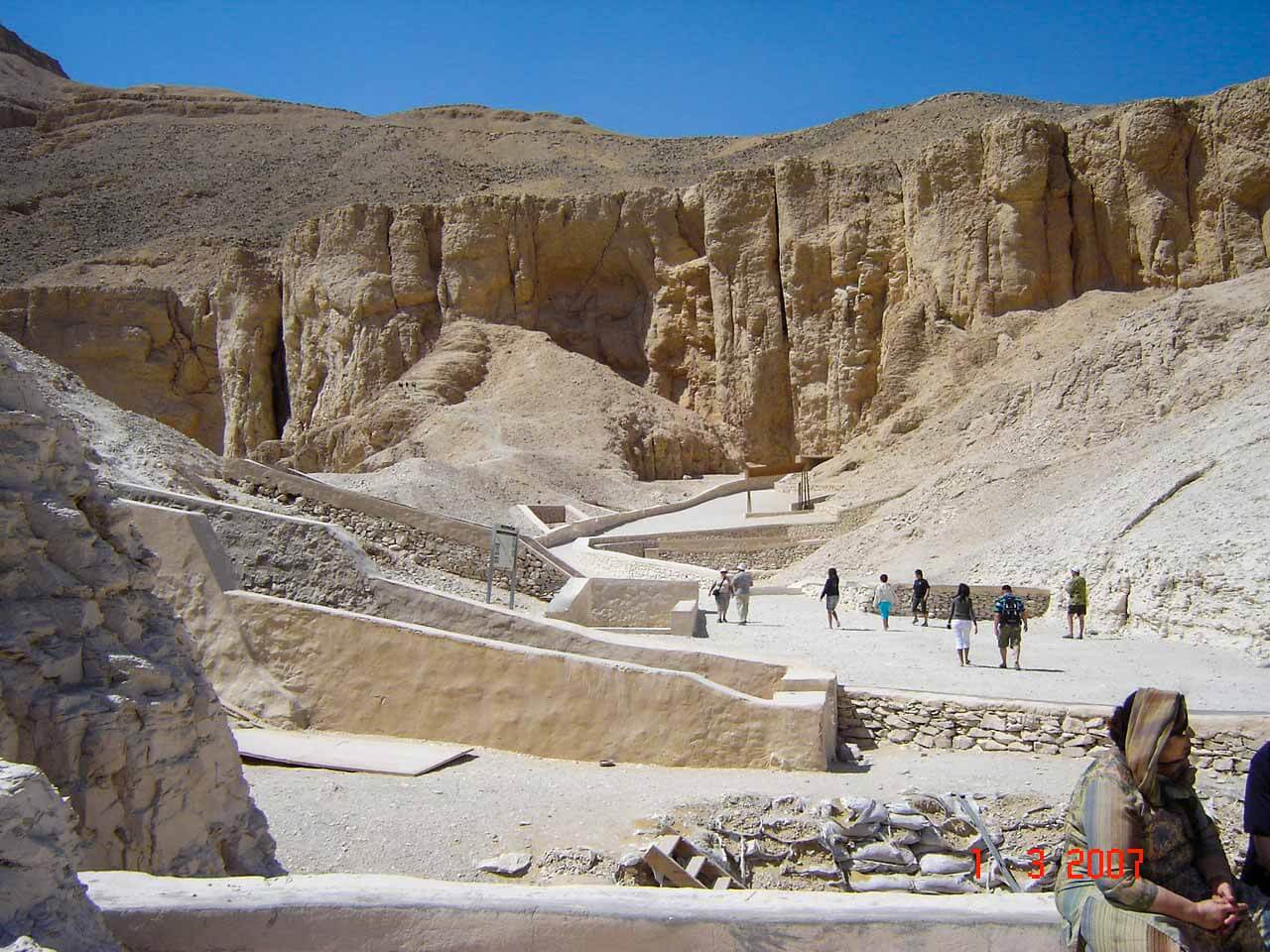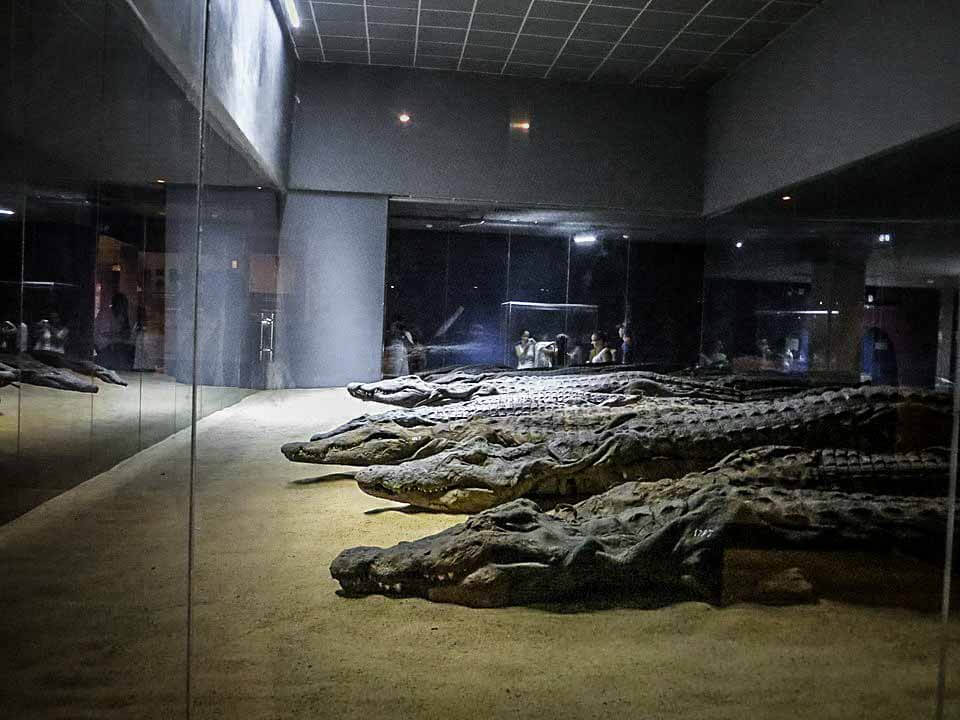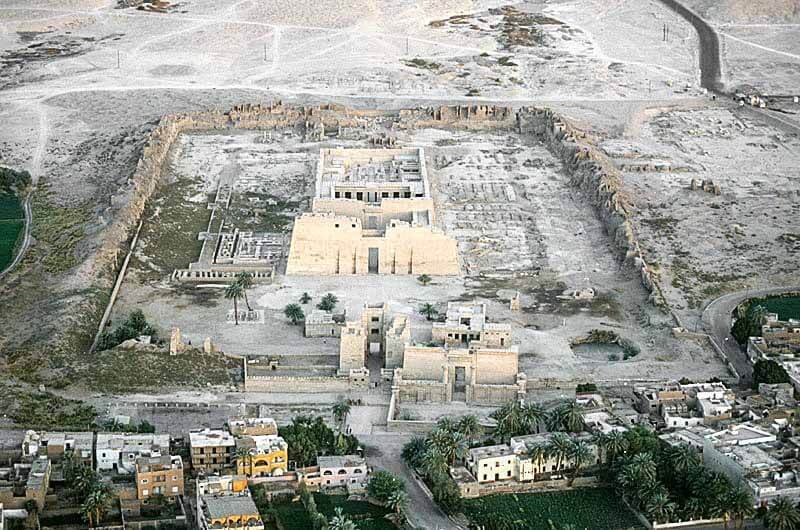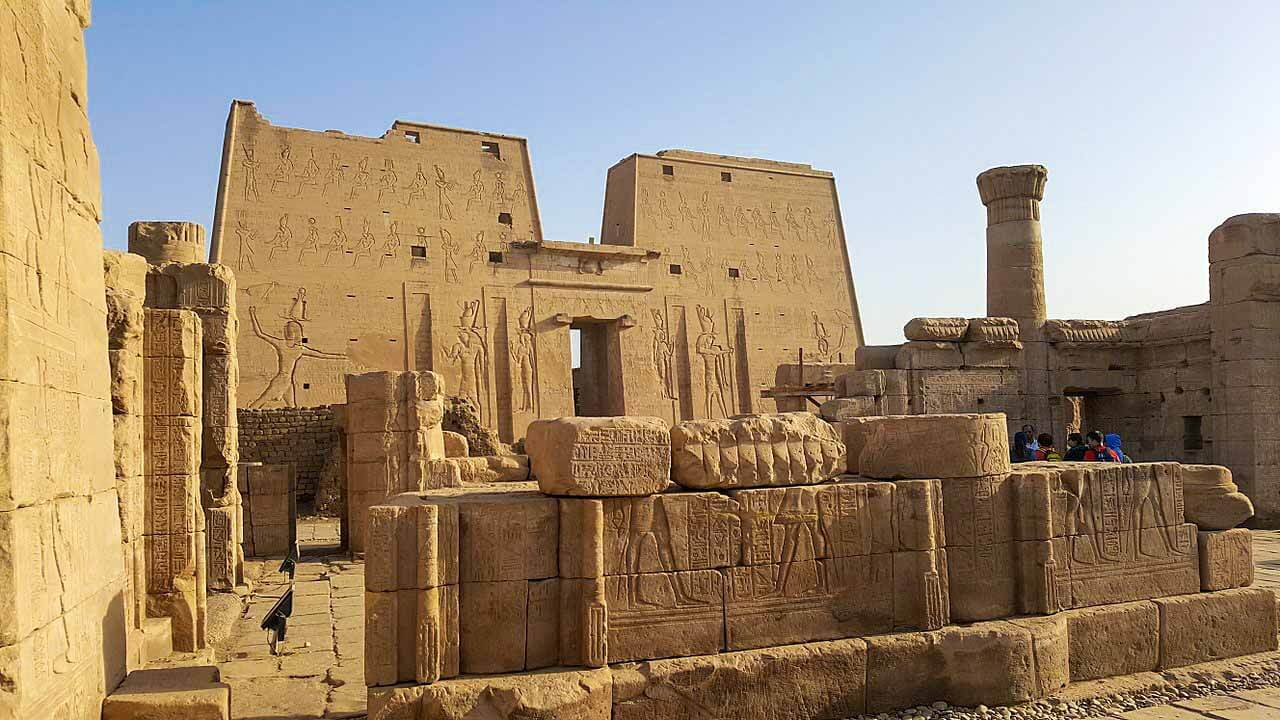Aswan, Egypt
Coordinates: 22.793400, 32.545000
Wadi es-Sebua, or Valley of the Lions (so-called because of the sphinx-lined approach to the temple forecourts) is the site of two New Kingdom Egyptian temples, including one speos temple constructed by the 19th Dynasty Pharaoh Ramesses II
The first temple was built by the 18th Dynasty Pharaoh Amenhotep III and subsequently restored by Ramesses II
The temple once possessed three pylons. The first two, however, were made of inferior Nile mud brick and have since crumbled. Only the stone gate passageway through them has survived.
Development into a church
In the 5th century AD, the temple was converted into a Christian church. Some temple reliefs were covered with a layer of plaster, where painted images of God was done
Relocation of the Temple
When the Wadi es-Sebua temples were threatened by flooding from the construction of the Aswan Dam project, the temple was dismantled in 1964 with U.S. support by the Egyptian Antiquities Service. They were moved to a new site only 4 km west from their original location.
New Wadi es-Sebua
The New Wadi es-Sabua is an archaeological site in Egypt. It is located only 4 km west from the original site of Wadi es-Sebua, which today contains three ancient Egyptian temples in Lower Nubia, the temples of Wadi-es Sebua, Maharraqa and Dakka respectively
The Temple of Dakka and Temple of Maharraqa were also moved and rebuilt at the New Wadi es-Sebua temple complex area.


